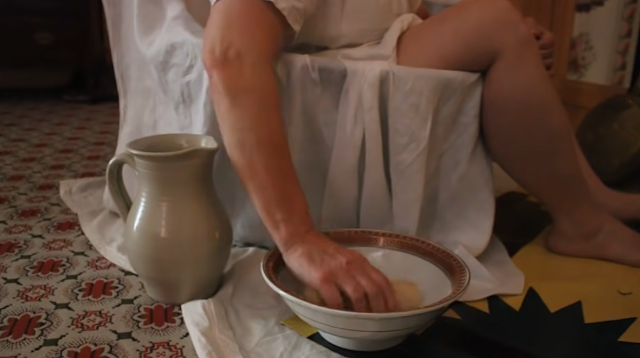I was asked by the Edwardsville Intelligencer newspaper to write a monthly column about Stephenson House. After much thought, I decided to write letters in the voice of Lucy Stephenson; the matriarch of the historic home (1820-1834). These letters weave together historical events, present-day, and my imagings of what her life may have been like. Originally published in the Edwardsville Intelligencer, July 3, 2021, https://www.theintelligencer.com
June 22, 1821
Edwardsville, Illinois
Mary,
My dear friend, I have been rather lax in my letter writing
of late. Now that the gardens are planted, I hope to have more time to send you
news. Life on our farm has kept all of us exceedingly busy this spring. We
endeavor to keep the deer out of the garden plots this season. As you may
remember from my last letter, they completely decimated our crops last year.
There was hardly enough food to put up to get us through the winter. Ben
consulted with several local gardeners, more knowledgeable than he, on possible
remedies to our problem but we are hopeful that our current solution, will
discourage the animals from helping themselves to our hard-earned produce. It
is quite ingenious, I must say. Mrs. Donna Bardon, Mrs. Deborah Rathert, Mr. William
Eaton, and Mrs. Carol Gardner were the gardeners Ben consulted. They designed
and built a tall fence, which exceeds 8 feet in height, around our main garden.
It is constructed of wire and wooden posts from which hang various lengths of
colorful ribbons. The movement from the ribbons as well as the height
discourages the deer from trying to jump into the beds. It is with great
happiness that I can say, it has worked grandly so far. No deer have been in
the garden since the fence was complete. Unfortunately, we have not been as
successful in keeping the rabbits out. But I suppose, there must always be
something to keep us occupied.
The weather has turned quite pleasant this week. It was so
stiflingly hot last week that the reprieve is very welcome. I must tell you the
heat was so overbearing on the last day of the Academy that one of the poor
dears nearly fainted. A small bit of ice, still stored in the cellar from
winter harvesting, was wrapped in a bit of linen cloth and placed upon her neck
with strict instructions for her to lay upon the settee in the parlor until it
was completely melted. My friend, Mrs. Kathleen Schmidt, fanned her vigorously
until her color returned. After her rest, she was quite recovered.
Well, I find that my duties must be seen to so my letter
must end. One parting bit of information must be given though. In your last
letter, you requested the Tea Cake receipt that Winn is quite renown for here
in Edwardsville. She has written it out and I enclose it here.
There is a kind of tea cake still cheaper. Three
cups of sugar, three eggs, one cup of butter, one cup of milk, a spoonful of
dissolved pearlash, and four cups of flour, well beat up. If it is so stiff it
will not stir easily, add a little more milk.
Give my affections to your family. Please write to me soon
as I promise to do the same.
Yours In Friendship,
Lucy Stephenson
















